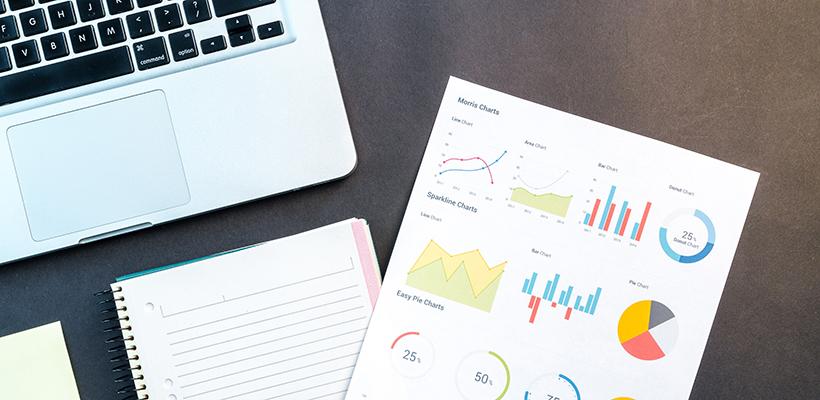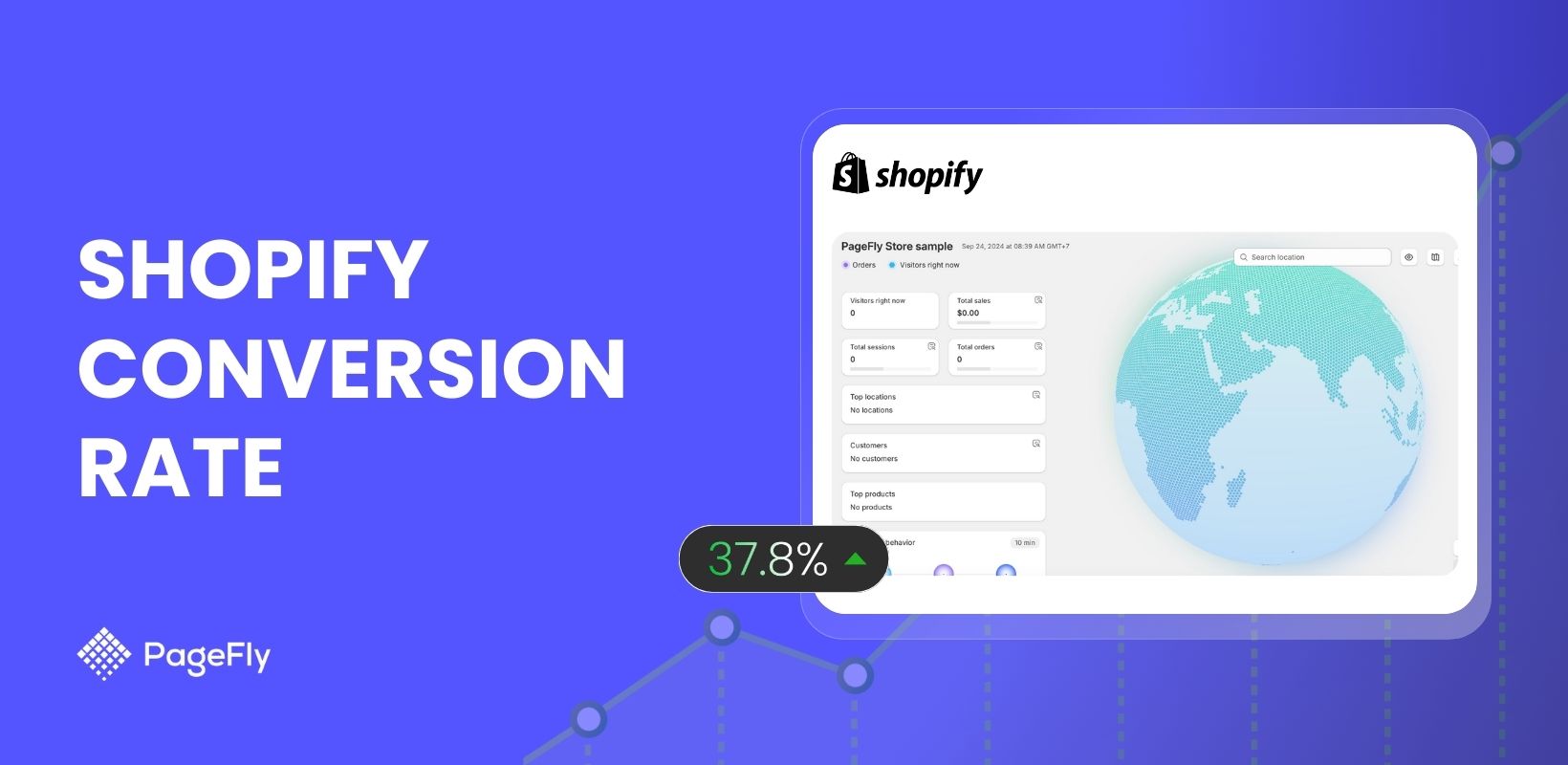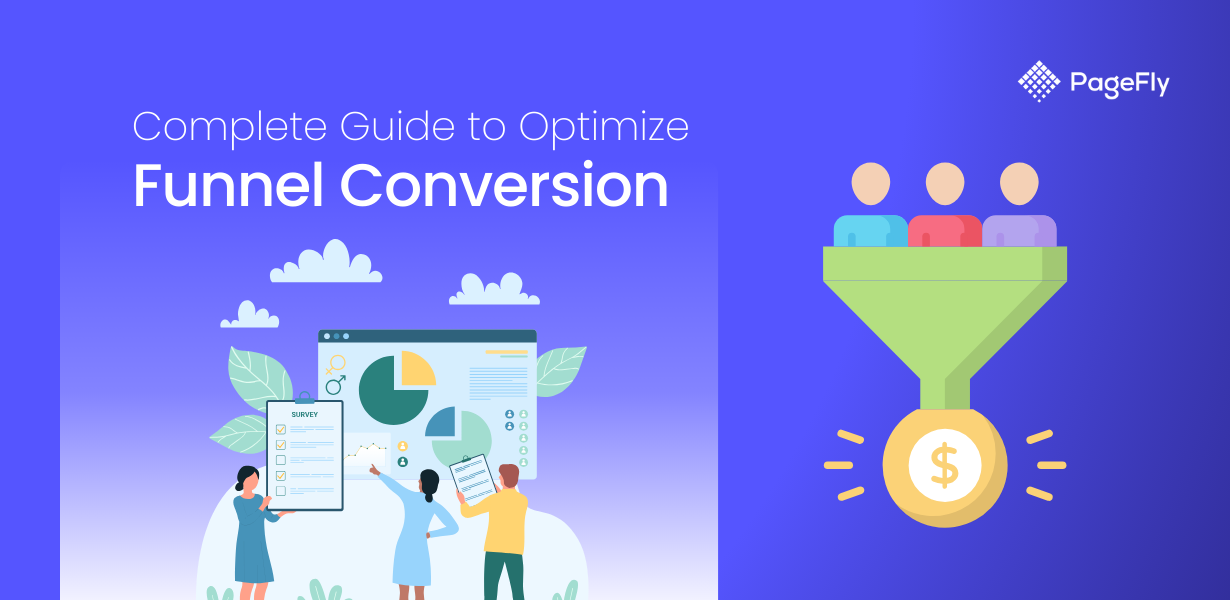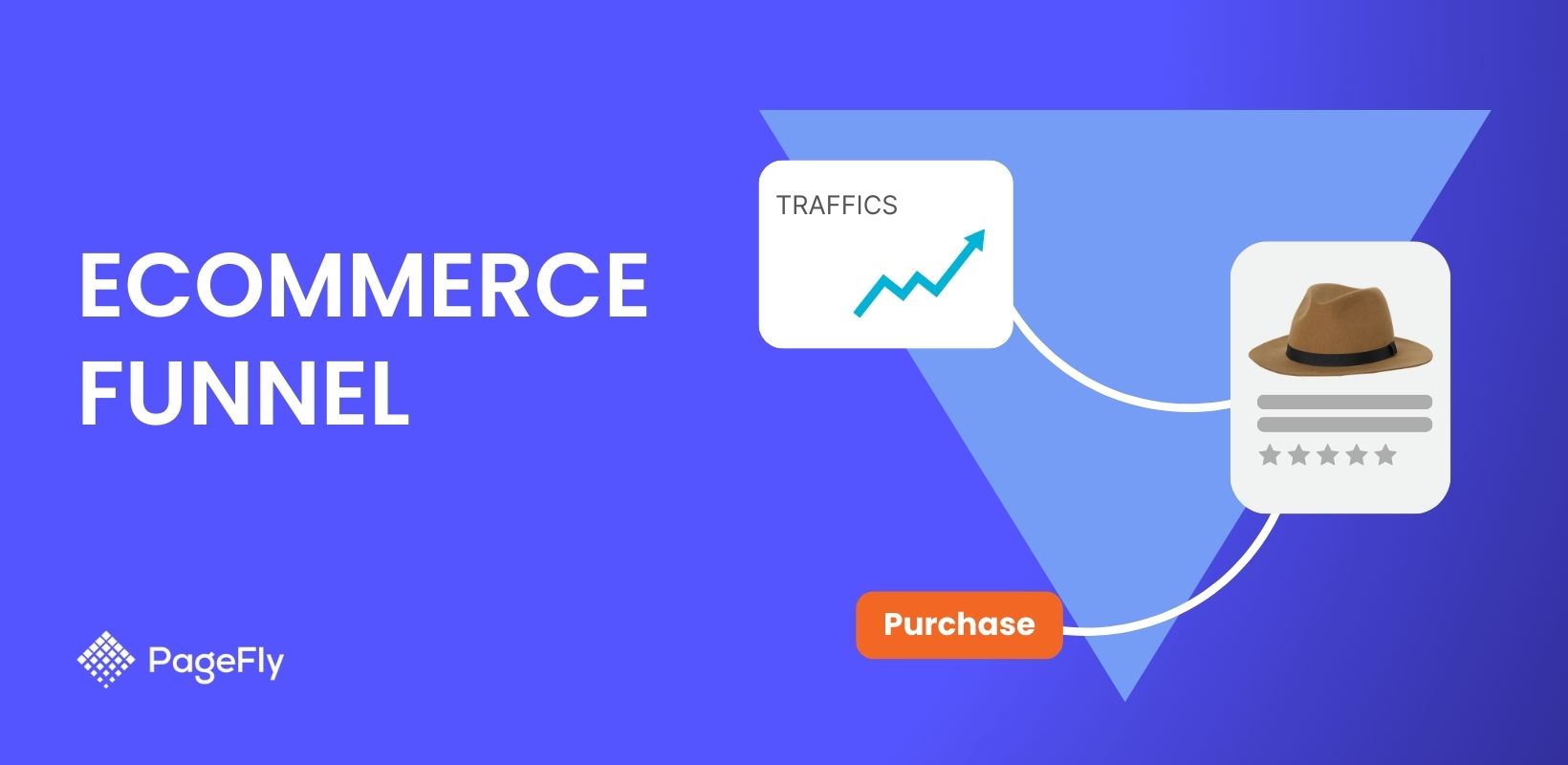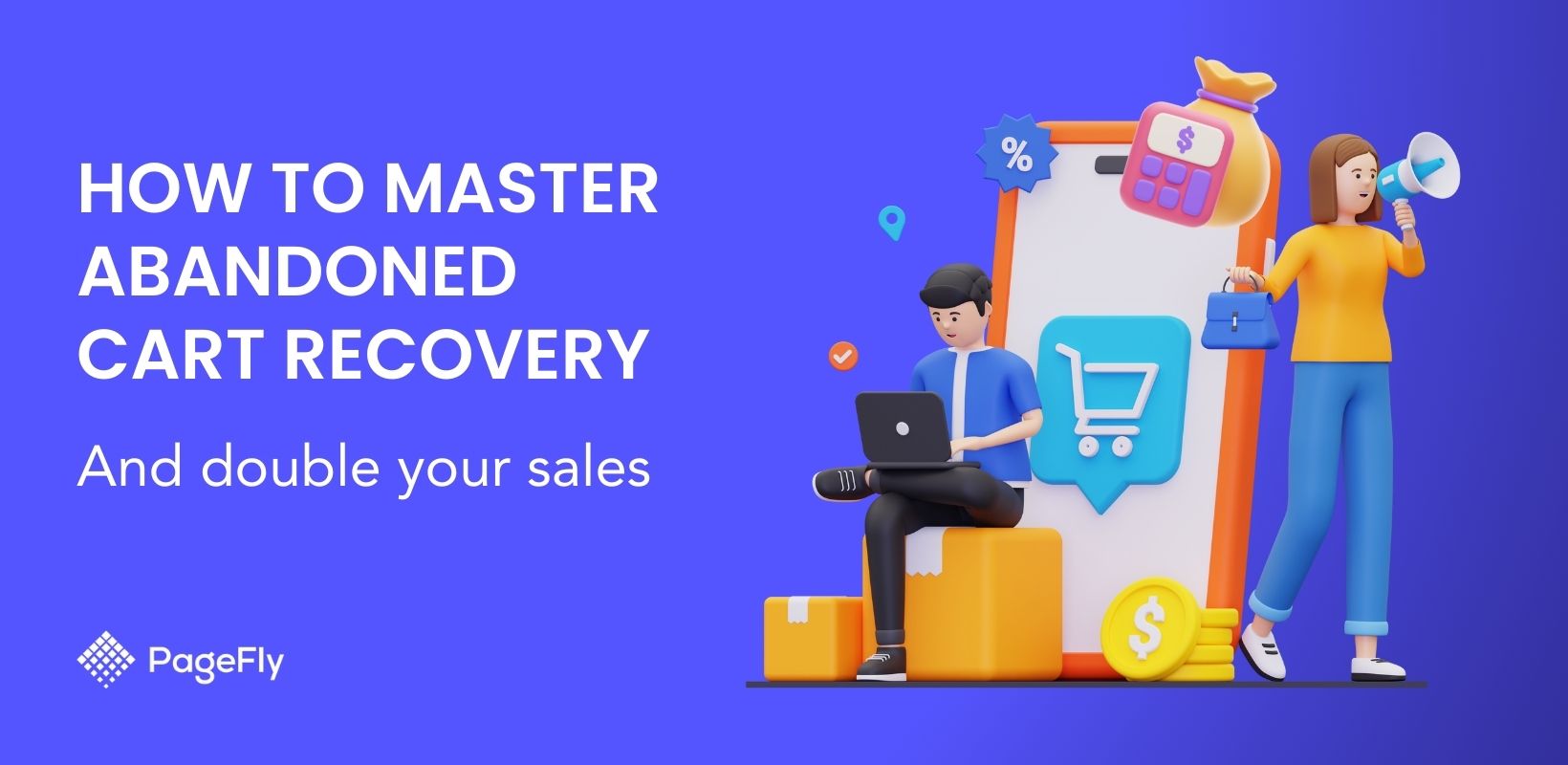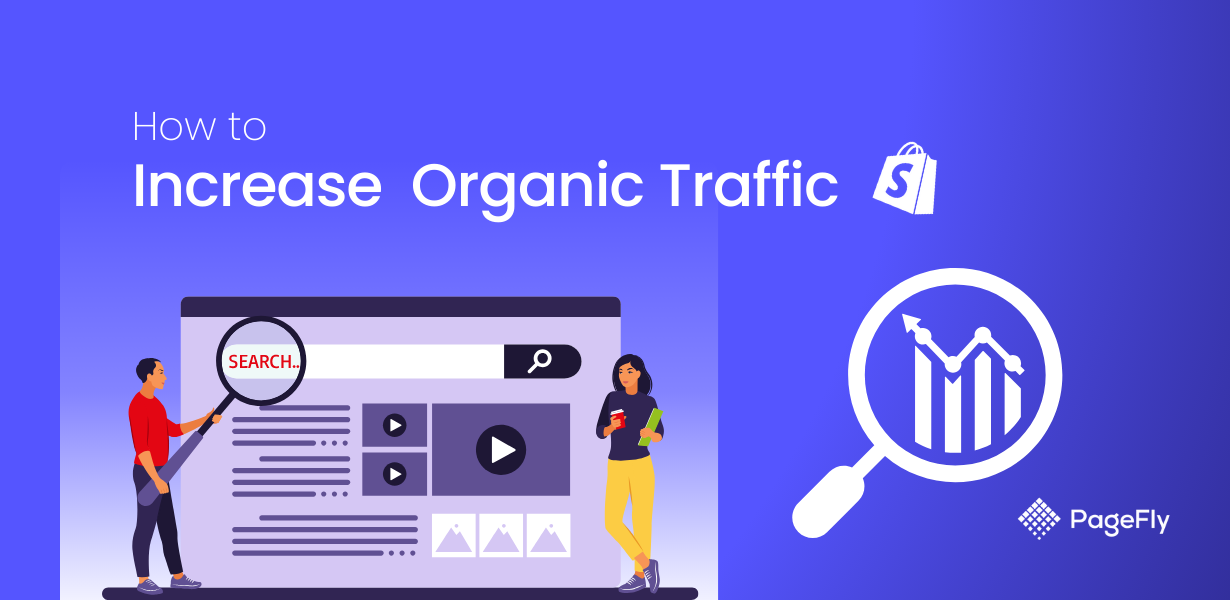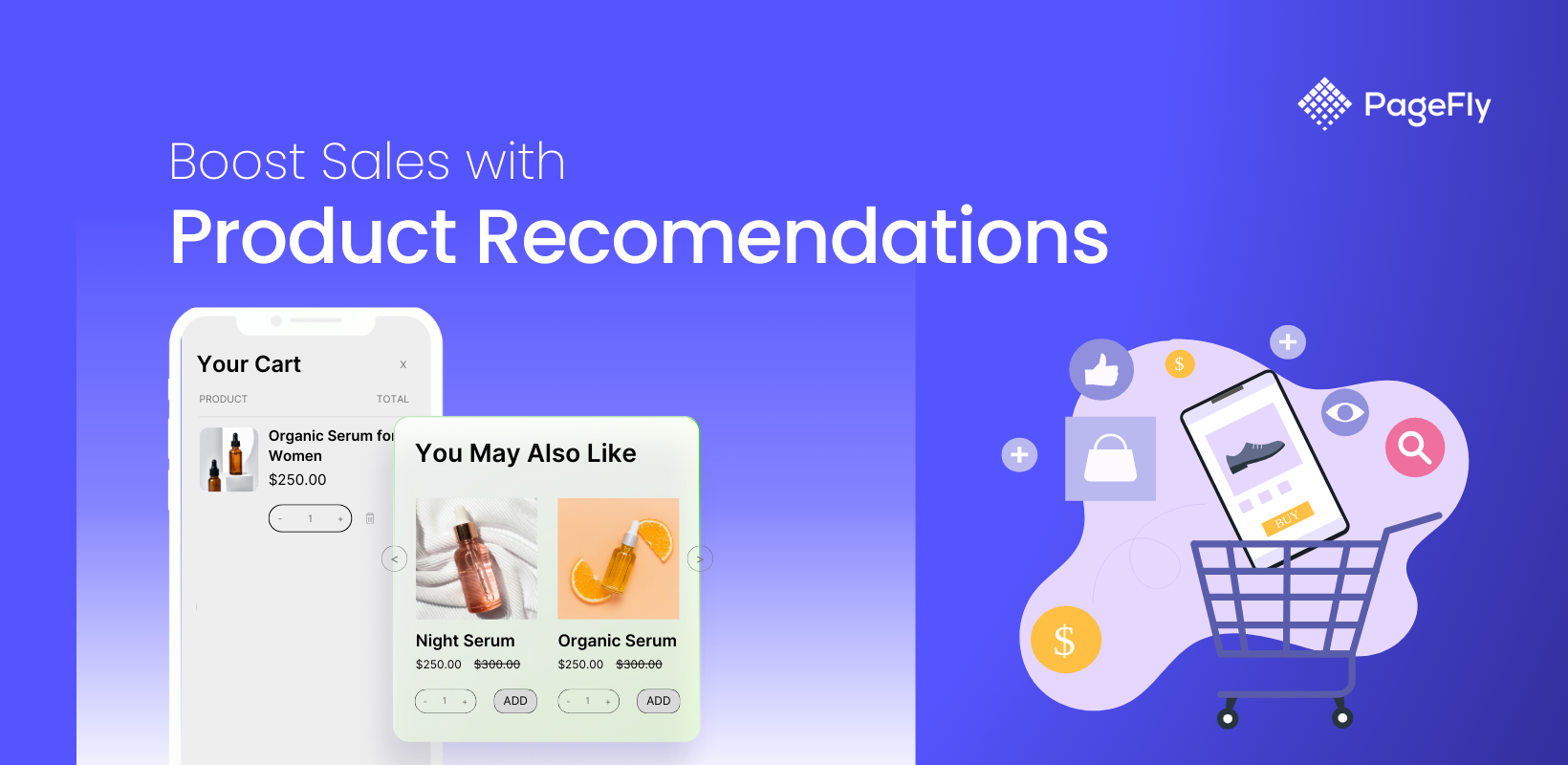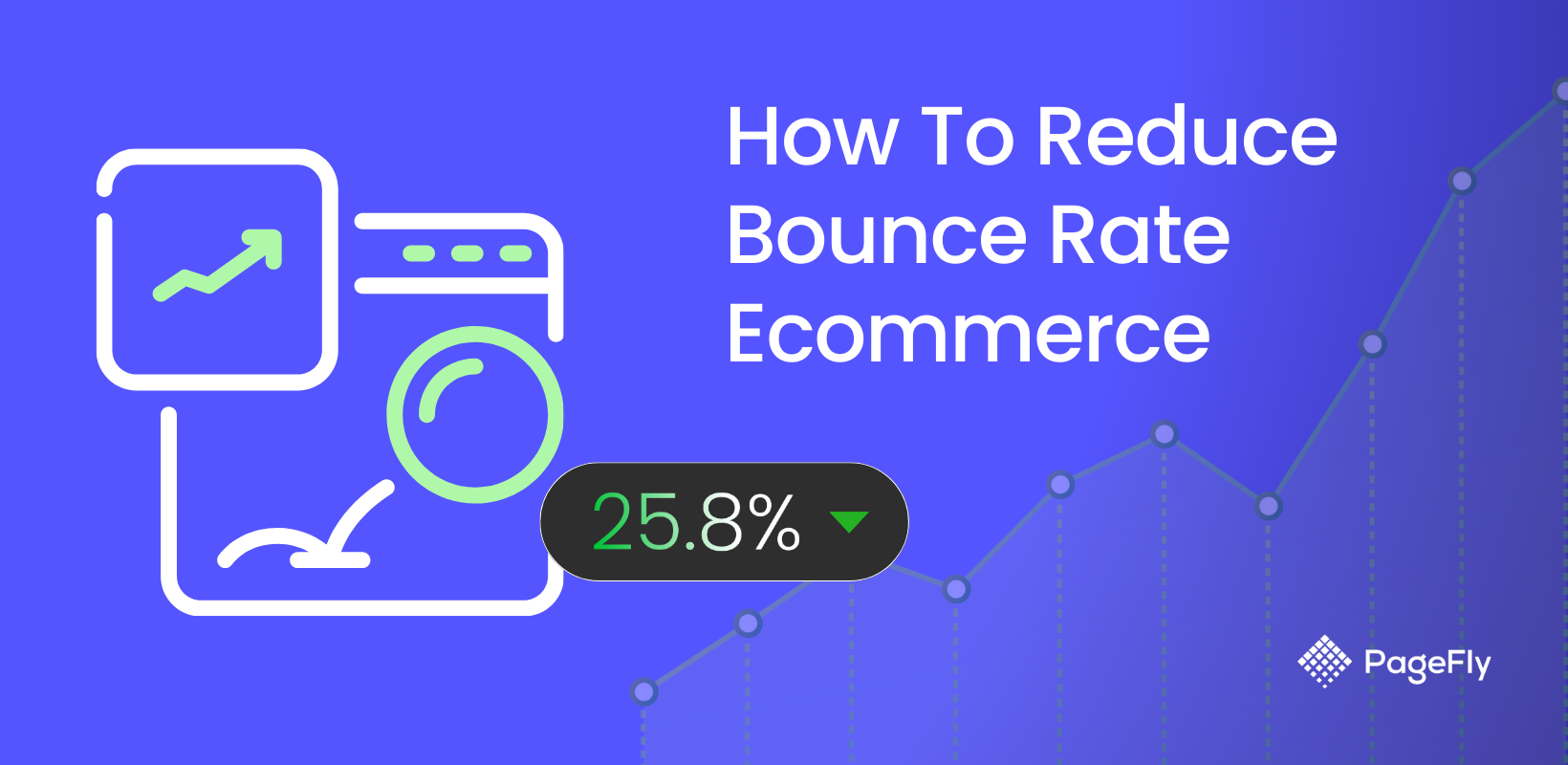Many new Shopify store owners focus on making the first sale without performance tracking. You should include conversion tracking in your setup plan for your new shop. This article will point out benefits of Shopify conversion tracking and basic tracking metrics. I will also provide some small steps to help you begin building your conversion tracking flow.
First, let’s explore the magic of a Shopify conversion rate tracking flow to your online store.
I. Benefits of Shopify Conversion Rate Tracking
Conversion tracking is a vital step in your new Shopify store setup.
A Shopify conversion tracking flow makes a big picture of your revenue, or how much money you make every day. You can still calculate order manually, but it is too time-consuming and not advisable hereafter.
A constant tracking flow also helps you diagnose your marketing channels’ efficiency. Based on that, you can choose to increase the budget for some productive channels. You can also stop ones that bring no conversion or reduce concentration on weak ones.
Moreover, you can spot which product items carry the highest percentage of revenue. Thus, you can either keep importing monetary products or reduce or remove inactive ones.
The biggest value of a tracking flow lies in an insightful buy flow. From the monitoring dashboard, it'll be easier for you to conversion-boosting activities.
So, based on which criteria can you start your performance tracking?
Primary Shopify conversion tracking metrics
Tracking metrics on Shopify goes beyond total revenue or number of the successful transaction. Below are some must-have tracking metrics.
- eCommerce transaction: the total amount of online eCommerce transaction
- Order value
- Minimum order value: the smallest sum of money that a sale can make
- Average order value: the average amount of money for a transaction
- Total revenue: total sum of money from online transaction
- Conversion rate: the percentage of total amount of online sale over total traffic
- Product SKU (or Product ID): unique code for a product/ product set.
- Quantity:
- Total quantity: total sales for a product item/product set
- Average quantity: average sales for a product/product set
- Average product price: average price of a product/product set
- Product revenue: total revenue granted from a product/product set
Recommended: Tips & Best Practices to increase the Shopify store's conversion rate in this video
II. Types of Shopify Conversion Rate Tracking Reports
2.1. Default Shopify Reports dashboard
By default, Shopify has its “Reports" dashboard. You can find this dashboard by going to Admin > Reports.
The biggest advantage of default Shopify Reports dashboard is that it handles sales data much more accurate than any other third-party integrated tracking platforms.
On your Shopify dashboard, there are 2 types of report: default report and custom report
- Default report: default report is divided into 3 main sections Sales, Acquisition, and Behavior. You can have an overview of your online shop, but it's hard to dig into details for each section by using this default report.
- Custom report: Shopify allows you to create a custom report based on Sales, Payments, Taxes, Visitors, Customers. With this report, you can dig deeper into statistics for a particular section of your online Shopify store. You can also pick up criteria for your custom report via report filters and dimensions.

In the default Shopify reports dashboard, you can view default reports, or create your custom report based on your business goal.
Default Shopify Reports dashboard is a great start for new Shopify stores. You can instantly have an overview of your store performance without too many configurations. But as the store gets expanding, it'll become much harder for you to get detailed insights. Besides, both default and custom Shopify reports are often fragmented, and there is no way to connect custom reports together. Thus, it's hard to of track the entire customer buy flow from site visiting.
2.2. Facebook conversion rate tracking pixel
You can add your page's Facebook Pixel ID to begin the monitoring flow by going to Admin > Online Store > Preferences. Then you can add the tracking pixel code for your Facebook marketing activities. To insert the right pixel code, you have to know how to set up conversion tracking on Facebook.

2.3. Google Analytics conversion rate tracking code
Similarly to Facebook tracking pixel, it's simple to connect Google Analytics to your Shopify store via the Online Store dashboard. A strong plus of Google Analytics tracking code is that you can track the total marketing performance across multiple channels, including Facebook. But if you want to audit your Facebook marketing effort thoroughly, you should look into your Facebook dashboard, starting with installing Facebook tracking pixel.

There has been official Shopify documentation on Google Analytics tracking code. In the following articles, I’ll write more details on how to setup Google Analytics tracking.
There are 2 levels of Shopify conversion tracking in Google Analytics:
- Basic eCommerce tracking: if you only want to track revenue and transaction data
- Enhance eCommerce tracking: if you want to dig deeper into customer's behavior
Depending on your online shop status you can choose to get started with basic tracking, or get into details with the enhance one.
2.4. Google Adwords Shopify conversion rate tracking tag
Unlike Facebook and Google Analytics, you have to use a brand new Google account to run Adwords ads. Only after you have paid the first Shopify monthly fee, you will receive few bucks of Adwords credit to begin running ads, as confirmed from Shopify. (The amount of credit can be differed based on country)
III. How Does Shopify Calculate Conversion Rate?
Analytics conversion rate is important because it determines the success of a Shopify store, a marketing campaign or an A/B testing variant. Higher conversion rates also lead to higher ROI for your eCommerce store. Have a look at the conversion rate formula:
About cost optimization, we have one metric:
This means, for the same Marketing cost, when conversion rate goes up, cost per action goes down on. We sell more at the same cost, so that improves ROI for your Shopify store
However, analyzing the conversion rate is a painful process.
3.1. A higher conversion rate doesn’t always mean higher performance.
It is ridiculous when you sort the conversion rate column and see that a lot of Marketing sources have 100% conversion rate because they have only 1 visitor and 1 conversion. This situation makes it easy to be mislead.

3.2. Making your Shopify store more engaging can reduce the conversion rate
Let's say you have a pure eCommerce site, with absolutely no content other than products. Your average customer comes to the site once a month and buys once every two months. To try and improve this, you add a blog to the site with really engaging content.
Suddenly, your average customer is visiting the site twice a week. To maintain your conversion rate, you'd have to persuade your long, loyal customers to buy once per week, instead of once every two months. In other words, your site has most definitely improved, but it's very likely your headline conversion rate will go down.
3.3. Conversion rates vary widely on visitor types
New visitors may generate less conversion than returning visitors. A first-time visitor to your site who has never bought from you before, is far, far less likely to purchase than an old, loyal customer.
Visitors from different traffic sources/referrers will also differ wildly. Direct visitors will tend to convert more highly still since they tend to contain more existing customers. Likewise, brand and non-brand search terms, generic vs long tail terms will vary too.
As said, there are too many elements that affect the conversion rate and mislead our Shopify conversion tracking. In this post, I will not mention ways to improve conversion rate, but must-check metrics when your Shopify conversion rate dramatically drops.
IV. Low Shopify Conversion Rate: How To Fix?
If your eCommerce store’s conversion rate drops, don’t panic. Before trying to find a way to increase the conversion rate of your site, try to look deeper into these following metrics.
4.1. Evaluate your eCommerce audience
In Google Analytics, from the left side panel, click Audience. From here, inspect Demographic > Geo/Location > Interest to see if you are targeting the right audience you have defined before.
After that, go to Behavior and inspect types of visitors (New or Returning).

Your existing customers are swayed by brand, service, product quality, delivery, etc. Your new visitors are far more swayed by perception. If the number of returning visitor is getting lower and lower, try to think about the reason why people do not return to your website.
Is your content interesting enough to pull them back? Should you increase marketing budget to retarget old visitors?
4.2. Break your Shopify conversion rate by landing page and channel, traffic source/medium
From the left side panel, click Acquisition tab, then click Channels. You will see your Shopify conversion rate for each channel. Instead of looking at the overall conversion rate, try analyzing conversion rate of individual channels and answer the question: In channel, do you have the highest and the lowest conversion rate? In which channel does conversion rate drop? And Why?

From Acquisition, click All channels, then click Source/Medium. You can see what source of traffic has the highest conversion and which one has the lowest. In the secondary dimension search box, search “landing page”.

Here you have a report about the conversion rate of each landing page.

Try answering the question “What landing page pulls the overall conversion rate down? And why?” Then fix the traffic source or landing pages that are performing badly.
4.3. Check time on site and bounce rate
As Google explains, time on site is the average amount of time that users spend on your site, whereas bounce rate is the number of users dropping out from your site when reaching the first landing page, in comparison to a total number of users.
Time on site and bounce rate are two of the most important metrics in Shopify conversion tracking. You cannot expect users to buy from your Shopify store if they remain on your site for like 2 seconds and left intermediately without seeing around on your site for more product information.

When bounce rate is high and time on site are too low, try optimizing your page loading speed.
Online shoppers are impatient creatures. They will not likely to wait for your site to finish loading within 10 seconds. Hubspot has carried out research about the relationship between load time and conversion rate.

The research also shows the relationship between loading time and bounce rate. As a result, low site loading speed results in high bounce rate and low conversion rate.

Ad relevance is a factor that affects time on site and bounce rate. Online users, when clicking on your ads, expect to see what is being shown on the ads. Try to create advertisements that are relevant to your landing page’s content.
Besides this, try to create internal linking on your landing page, to link to other pages within your site. It is not only good for your Shopify store SEO but also keeps users on your site longer.
Finally, it is important to optimize the mobile version of your Shopify store. Nowadays, people are using mobile more and more when shopping online, tons of Shopify traffic comes from mobile devices so that mobile performance has a huge effect on your conversion rate.
According to Shopify, the mobile-first design helps Shopify stores convert more. To see if your Shopify store performs well on mobile or not, search Device Category in Secondary dimension, then click Advance search, and type in “mobile”.

In this way, you can find out which landing page is performing better or worse on mobile and which one should be fixed.
4.4. Check User Flow report
According to Google definition, User Flow report presents paths users took through your site, from the source or landing page or other dimensions, through the various pages, and where along their paths they exited your site.
The Users Flow report lets you compare volumes of traffic from different sources, examine traffic patterns through your site, and troubleshoot the efficacy of your site.

From this dashboard, search landing page to see which pages they go through and from which pages they drop. Grey lines present the flow of traffic, the red parts present where and how many users drop from each page.
By looking at this graph, you may find out which source or landing page is generating the most traffic and which one has the highest bounce rate. Try to fix the source and landing page that have the most traffic but high bounce rate.
V. Shopify Marketing Tracking: Common Issues
Even when you have got an automatic system to track your marketing efforts, some problems might still happen.
5.1. Performance data discrepancies
The sales data between Shopify Reports and third-party tracking platforms doesn't always match. There are also some problems in performance data matching among different tracking platforms. You can track transaction statistics better in the default Shopify Reports, but it'll be easier for you to track the overall marketing effort via Google Analytics tracking dashboard. And vice versa.
Moreover, because of the omnichannel marketing, a customer now has more reference places to consider and make a purchase decision than a few years ago. But not all tracking platforms aren't ready for that integration.

(An illustration on how the last click is made. Image credit: Clickz.com)
There are many reasons for this discrepancy:
- View-through conversion: a customer view a product on your Facebook sponsored ad. He finds it interesting, but he makes the purchase on your Shopify store.
- Cross-device conversion: a customer checks your product on mobile device, but he makes the final decision on desktop
Facebook tracks the last click action (the click that makes a transaction) which a customer has made on a Facebook ad or Facebook post. On the other hand, Google Analytics tracks the last paid click regardless of the marketing channel. Therefore, conversion on Google Analytics is often lower than on Facebook.
5.2. Unorganized dashboard
Any performance tracking platform is messy until you make something with them. In other words, if you just make basic setup and don't organize your dashboard well, you cannot make the most of the performance tracking. Similarly to getting the first sale, constructing a coherent Shopify conversion tracking flow requires a serious time and effort investment.
5.3. Order duplication/cancellation/refund
In eCommerce, you cannot avoid order duplication, cancellation, or refund. The problem is, no conversion tracking platform can automatically detect order mistakes.
Here are some methods to deal with this tracking noise:
- Make the final thank-you page accessible once only after the customer has finished the order payment
- Double check your order data match between Shopify and third-party performance tracking platforms (preferably weekly)
- Set up an order reverse function (in following blog posts, I'll explain more details on how to setup this function)
Now you have known everything there is to know about Shopify Conversion Rate Tracking, it's time to dive in the next steps: Shopify Conversion Rate Optimization - check out our exclusive guides for Shopify CRO here:
Final words
In sum, Shopify conversion rate tracking is essential, and it should be implemented right when starting your online store. But whether free or paid, there is no perfect tracking platform. And there might be some problems happen when you are doing tracking for your store. My recommendation is that you should notice problems as soon as they happen, and try to find quick solutions to avoid inconvenience in the future.
Do you have any lessons learned on conversion tracking? Please share with me right in the comment section below.




